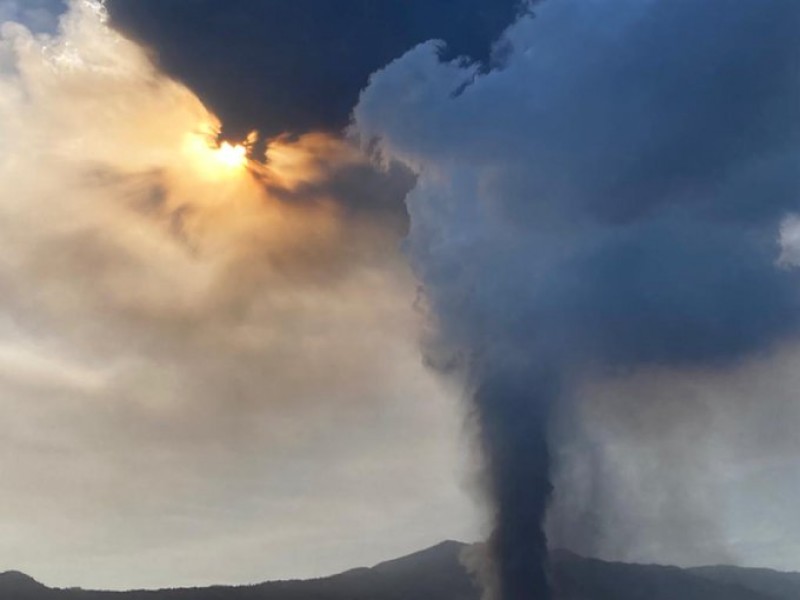Date Published: 23/09/2021
ARCHIVED - Latest news on La Palma volcano: ash cloud leads to disruption at the airport
Several airlines have delayed their flights while Aena has restricted airspace for low flying planes

The Cumbre Vieja volcano on the Canary Island of La Palma has changed its eruptive behaviour on Thursday September 23, according to scientists, and has become visibly more explosive, with the Cabeza de Vaca volcanic column expelling magma with greater force in the last few hours.
Geologists from the National Geographic Institute (IGN) explained that in this kind of ‘Strombolian eruption’, where several milder blasts are experienced, there are periods of time when there is less lava but more ash and volcanic material. At other times, the lava flow increases while the other elements diminish.
The latest report from the Scientific Committee released on Wednesday has suggested that explosive episodes could continue to occur for several weeks.
Involcan scientists confirmed on Thursday that the volcanic plume (the gases emitted by the volcano) has reached 4.2 kilometres in height, which has resulted in AENA establishing temporarily restricted areas of airspace in the municipalities of El Paso and Los Llanos de Aridane for aircraft flying below 3,000 feet. While no flights have yet been cancelled and La Palma airport remains open, several airlines have now delayed take-off to see if the ash cloud dissipates.
Meanwhile, volcanologists have been forced to re-evaluate their claims that the lava flow is heading toward the sea, something that could potentially have dire environmental consequences due to the emission of toxic gases. While mathematical models indicate that the lava will continue its advance for some time, the slowdown in the flow in the last few hours makes it impossible to tell if it will actually reach the ocean.
According to the director of Pevolca, Miguel Ángel Morcuende, while the volcano is currently “quite explosive” its slow progress means that the situation has, for now, reached a zone of “mini stability”.
The experts believe that the position of the land in the path of the lava, between the towns of La Bombilla and Tazacorte, could actually prevent the magma from reaching the coast. In this event, extensive areas of crops would be saved, but for the moment, all scientists can do is watch and wait.
Image: Facultad de Ciencias Geologicas
Contact Spanish News Today: Editorial 966 260 896 /
Office 968 018 268




























